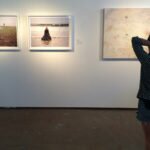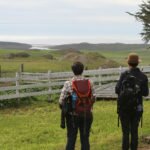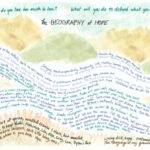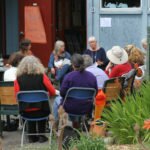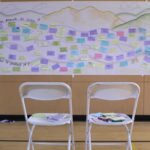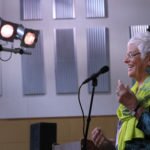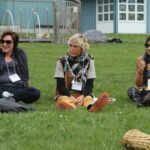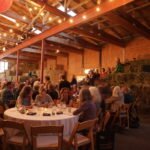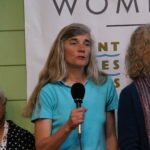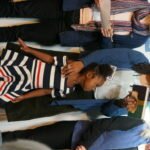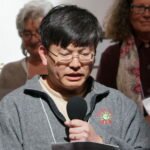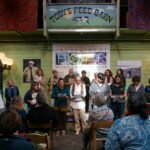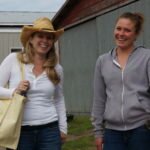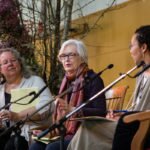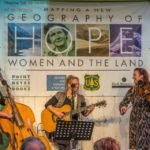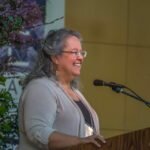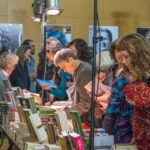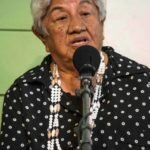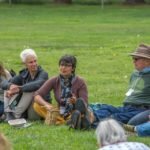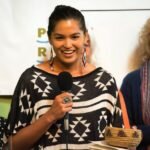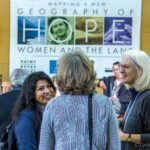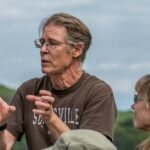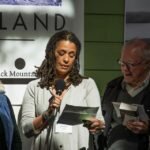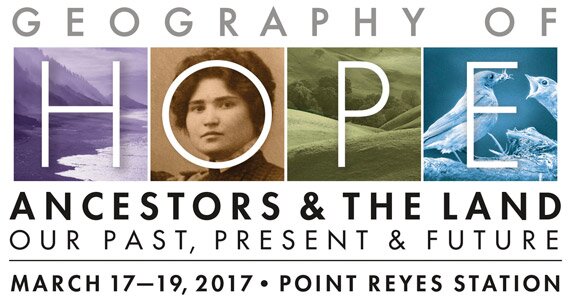
Ancestors & the Land: Our Past, Present & Future
I’d like to be a person my ancestors are proud of, and I’d like to be a person that my descendants thank. I think most of us would. —Winona LaDuke, 2017 Geography of Hope Conference Presenter
The 2017 Geography of Hope Conference, “Ancestors & The Land: Our Past, Present & Future,” will take place on March 17, 18 and 19 in Point Reyes Station, part of the traditional homelands of the Coast Miwok Indians. The conference is presented by Black Mountain Circle and co-sponsored by Point Reyes Books, the Center for Humans and Nature, and the U.S. Forest Service.
As native people here in West Marin and throughout the world have taught us, we can best care for the land by knowing its history, by cherishing its stories, and by actively working to protect it. The Conference hopes to stimulate conversations honoring ancestral connections to this and other landscapes—whether Native American, European, African, Asian, Latino, or elsewhere—that will lead to dialogues between generations and cultures to help us reconnect to place and restore balance to Mother Earth.
“This is a time of unprecedented threats to clean water and air, national parks and forests, and to productive farmland,” conference founder Steve Costa says. “Clearly in the coming months and years, we will be called upon again and again to act to protect our fragile ecology. We will be called upon to decide what kind of ancestors we will become.”
As one of northern California’s most exceptional literary gatherings, the Geography of Hope Conference brings together leading writers and activists to the coastal village of Point Reyes Station for a three-day feast of readings, discussions, and activities to inspire and deepen an understanding of the relationships between people and place.
The 2017 panel presenters are conservationists, teachers, spiritual leaders, poets, novelists, and journalists who use poetry, fiction, or literary non-fiction to express a sense of urgency about environmental concerns and a fierce compassion for the well-being of the Earth. They include: Joanne Campbell; Drew Dellinger; Nikky Finney; John Hausdeorffer; Wendy Johnson; Lyla June Johnston; Winona LaDuke; Ilarion (Larry) Merculieff; Cherrie Moraga; Melissa Nelson; Celia Herrera Rodriguez; Lauret Savoy; Greg Sarris; Constance Washburn; and Brooke Williams.
The conference includes field trips to nearby farms, ranchlands, and Point Reyes National Seashore. In addition, there will be three panel discussions during which authors, activists, and other participants exchange stories about ancestry, culture, community, land, food, and immigration. We’ll try to inspire right action, and not succumb to despair. We’ll try to articulate how future stories—those that will be told by our descendants—depend in large part upon our actions today.
Pre-registration required.
Full Weekend Ticket: $300
Includes:
Friday: Field trip; opening reception; supper; evening program
Saturday: Three panels; box lunch; supper; evening program
Sunday: Morning panel; closing ceremony
Saturday Only Ticket: $175
Includes: Three panels; box lunch; supper; evening program
Reduced Rate Ticket: All reduced-rate tickets have been distributed. Thank you for your interest.
Scholarship Attendee: All scholarships have been awarded. Thank you for your interest.
Volunteer: All volunteer slots have been filled. Thank you for your interest.
Lodging: Conference attendees from out of town have a few options depending upon life style and budget. Point Reyes Station is a small town on the edge of the Point Reyes National Seashore and several state and regional parks.
And although our three conference venues are within walking distance of each other, having a car is essential to get from the airport in San Francisco or Oakland to West Marin, and back and forth to most lodging.
• Bed-and-breakfast inns, cottages, small hotels: pointreyes.org; gopointreyes.com
• Camping: Olema Campground; Samuel P. Taylor State Park
• Hostel: pointreyeshostel When registering, please include a note in the Remarks field indicating you are attending the conference.
• Vacation rentals: vrbo.com; airbnb.com
Musical entertainment at the conference:
Friday reception: Diaspora plays mostly Sefardic music (music of the Jews of the Mediterranean), which has roots in the musical traditions of medieval southern Spain. The songs are sung in Ladino (Judeo-Spanish) and the music is noted for its variable time signatures. Diaspora also plays music from Greece, Turkey, the Balkans, and Afghanistan. Leah Sirkin (violin and vocals), Steve Brock (tabla and kanjira), and Tano Brock (oud, clarinet and vocals) are the core members of this family band from San Francisco and Inverness. Listen.
Saturday: Original ambient music by West Marin-based composer/multi-instrumentalist, Joyce Kouffman will be woven throughout the day—before, between and after panels. She layers sounds derived from ancient and modern cultures, improvising on conch shell, horns, guitars & strings, woodwinds, and percussion. Joyce studied in West Africa with the master drummers of the National Ballet of Senegal to augment her training and teaching at Harvard University in classical music.
Saturday Evening: Joyful, surprising musical offerings by: chrisTINA CARELLA waldeck, vocals; John Hoy, guitar and bass; and Jack Dawson, keyboard and vocals.
Catering: Suppers catered by Paella del Reyes, Hog Island Oyster Company, and Anaviv. Box lunches by Fork Full of Earth.
Refund Policy: Cancellations made prior to March 1, 2017, will be charged a $50.00 fee. No refunds will be given on cancellations made after March 1, 2017.
Questions: For questions regarding the conference, please email
History
Since 2008, Point Reyes Books has sponsored one of northern California’s most exceptional literary gatherings. The biennial Geography of Hope Conference brings together leading writers and activists in the coastal village of Point Reyes Station for a three-day feast of readings, discussions, and activities to inspire and deepen an understanding of the relationships between people and place. The conference takes its name from Wallace Stegner’s famous “Wilderness Letter” to Congress in support of the 1964 Wilderness Act. In it he described wild landscapes as part of our “geography of hope.”
Sponsors
The 2017 Conference is presented by Black Mountain Circle, and co-sponsored by Point Reyes Books, the Center for Humans and Nature, and the US Forest Service. Media sponsorship is provided by High Country News, KWMR 90.5 FM, and the Point Reyes Light. Sponsors help make the Geography of Hope Conference possible. A wide variety of sponsorship opportunities are available this year. Contact Steve Costa by email at stevegcosta@gmail.com for details about how you can join the Center for Humans and Nature, the US Forest Service, and others in supporting the 2017 gathering.
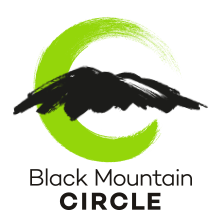
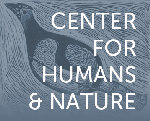
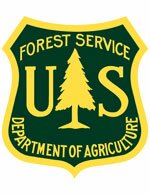
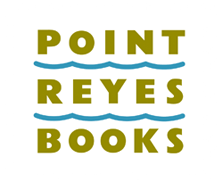
Media Sponsors

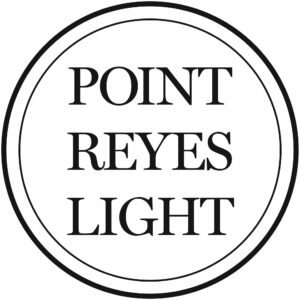
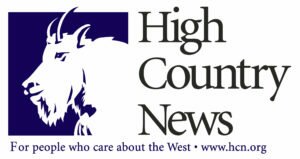
Supporters
Bolinas Museum
Mesa Refuge: A Place for Writing at the Edge
Casino utan svensk licens
Point Reyes National Seashore Association
Toby’s Feed Barn
Friday, March 17
Location: Dance Palace Community Center
10:30 AM Registration opens
12–4 PM Field Trips (Carpool from Dance Palace)
5 PM Supper
Location: Toby’s Feed Barn
7 PM Evening Program
Location: West Marin School
Welcome Remarks: Steve Costa & Melissa Nelson
Blessing: Joanne Campbell
Opening Remarks: Greg Sarris & Drew Dellinger
Harvesting the Gifts of the Ancestors (from the Work That Reconnects): Constance Washburn
Saturday, March 18
9 AM–4 PM Panels
Location: West Marin School
8:30 AM Doors Open
9 AM Keynote: Winona LaDuke
9:30 AM Panel #1: (Past)
Catching Up With The Past
Panelists: Celia Rodriguez, Lauret Savoy, Brooke Williams. Moderator: Melissa Nelson
To foster healthier relationships with each other and the land and to determine our environmental legacy, we must first look back in time. We all have ancestral narratives about people and place that have formed us. We must also become attuned to the “shadow stories” of people who have been or continue to be ignored by history. Where did your own ancestors originate? How were they connected to the land? Tell us your story.
10:45 AM Break
11:00 AM Panel #2 (Present)
Becoming Native To A Place
Panelists: Nikky Finney, Lyla June Johnston, Ilarion (Larry) Merculieff. Moderator: Brooke Hecht
There are many routes to the place we call “home” whether it’s the physical location where we were born, one we chose later in life, or one to which we were forced to immigrate. Once there, what are our responsibilities? Writer Robin Kimmerer says, “To be native to a place we must learn to speak its language.” What is the language of your place? How would you describe the symphony of spring or the silence of winter where you live? What are the sounds at the intersection of people and nature, of wildlife, water, traffic?
Tell us your story.
12:15 PM Lunch
1:30 PM Movement with Sylvie Minot
2:00 PM Panel #3 (Future)
What Kind Of Ancestor Do You Want To Be?
Panelists: Drew Dellinger, Winona LaDuke. Moderator: John Hausdoerffer
We are the links between our ancestors and our descendants. What can we learn from our ancestors and their relationship to the land that would inspire us to intensify our own efforts to benefit the environment and the generations that follow us? Future stories, those that will be told about us by our descendants, depend in large part upon our actions today. How will our children and grandchildren survive in the world we leave them? What will be our legacy to the land we call home? Tell us your story.
3:15 PM Break
3:30 PM Writing About the Kind of Ancestor You Want to Be
Led by Winona LaDuke & Jaune Evans
4:00 PM Panels End
5:30 PM Supper
Location: Dance Palace Community Center
7 PM Evening Program: Readings, Spoken Word & Music: Lyla June Johnston, Nikky Finney, Cherrie Moraga, Christina Waldeck & Sky Road Webb
Sunday, March 19
9:30 AM In Conversation: Local Ancestors Working on the Land. Moderator: Wendy Johnson
Location: Dance Palace Community Center
11:00 AM Closing Circle
Location: Giacomini Wetlands
Noon Conference Ends
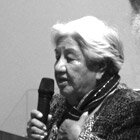
Joanne Campbell
Joanne Campbell is descended from Sonoma County families of the Pomo and Coast Miwok tribes and serves on the Graton Rancheria Tribal Council. She works with the Tribe to revitalize the Coast Miwok language and perpetuate the fine art of basketry. She also worked as a public health nurse in San Francisco for more than 30 years before retiring in 1992.
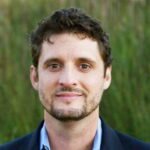
Drew Dellinger
Drew Dellinger is an internationally known speaker, writer, poet, and teacher who has lectured and taught extensively across the US, UK, Canada, and Australia. He is author of the award-winning poetry collection, Love Letter to the Milky Way, and the upcoming book, Martin Luther King—Ecological Thinker: Toward a Cosmology of Connection. Dellinger has been called “a national treasure” by Joanna Macy and “one of the most creative, courageous, and prophetic voices of his generation” by Cornel West.
Read more about Drew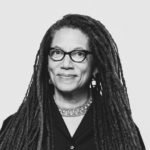
Nikky Finney
Nikky Finney was born in South Carolina and raised during the Civil Rights, Black Power, and Black Arts Movements. At Talladega College she began to explore intersections between art, history, politics, and culture. The exploration continues today in her writing, teaching and spirited belief in one-on-one activism. She is the author of four books of poetry. She taught creative writing at the University of Kentucky for 21 years, and now holds the John H. Bennett, Jr., Chair in Creative Writing and Southern Letters at the University of South Carolina in Columbia. She travels extensively, never lecturing, always inviting and hoping for conversations that just might improve the human condition.
Read more about Nikky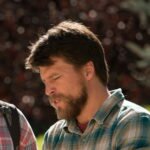
John Hausdoerffer
John Hausdoerffer is the Executive Director of the Center for Environment & Sustainability at Western Colorado University, where he is also a Professor of Environmental Sustainability and Philosophy. He is the author of Catlin’s Lament: Indians, Manifest Destiny, and the Ethics of Nature, editor of Letters from the Headwaters, and the co-editor of Wildness: Relations of People and Place. Dr. Hausdoerffer has also served as a Fellow and Senior Scholar for the Center for Humans and Nature.
Read more about John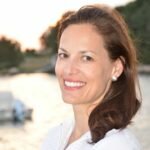
Brooke Hecht
Brooke Hecht has been president of the Center for Humans and Nature since 2008. Her interests are as broad as the Center’s—ecology, evolutionary biology, psychology, physics, theology, neuroscience, philosophy, history, ethology and more. She received her PhD in ecosystem ecology from Yale University’s School of Forestry and Environmental Studies where she researched ecological edges and threshold zones. Her field work took her to Iceland, where she was a Fulbright Fellow. Before joining the Center, Brooke was an Exchange Scholar at Harvard.
Read more about Brooke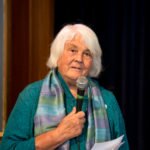
Wendy Johnson
Wendy Johnson leads meditation retreats nationwide as an ordained lay dharma teacher in the traditions of Vietnamese teacher Thich Nhat Hanh and the San Francisco Zen Center. She co-founded the Organic Farm and Garden Program at Green Gulch Farm Zen Center in Marin County, which inspired her book Gardening at the Dragon’s Gate. Since 2009, she has served as a founding instructor and mentor at College of Marin’s Indian Valley Educational Organic Farm and Garden.
Read more about Wendy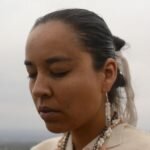
Lyla June Johnston
Lyla June Johnston was raised in Taos, New Mexico and is a descendant of Diné (Navajo) and Tsétsêhéstâhese (Cheyenne) lineages. She is a musician, public speaker, and internationally recognized performance poet. In 2012, she graduated with honors from Stanford University with a degree in Environmental Anthropology. During her time there she wrote several award-winning papers, including “Chonos Pom: Ethnic endemism Among the Winnemem Wintu and the Cultural Impacts of Enlarging Shasta Reservoir.”
Read more about Lyla June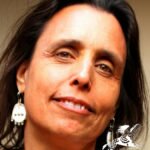
Winona LaDuke
Winona LaDuke (Ojibwe) is an internationally renowned Native American Indian activist and advocate for environmental, women’s, and children’s rights. She is the founder and Campaign Director of the White Earth Land Recovery Project, a reservation-based land acquisition, environmental advocacy, and cultural organization, and founder and co-chair of the Indigenous Women’s Network. Winona is the author of All Our Relations: Native Struggles for Land and Life and the novel, Last Standing Woman, in which she chronicles a Native American reservation and its people’s struggle to restore their culture. She lives with her family on the White Earth Reservation in northern Minnesota.
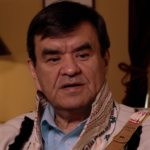
Ilarion (Larry) Merculieff
Larry Merculieff has more than 40 years experience serving his people, the Unangan (Aleuts) and other indigenous peoples locally, nationally, and internationally. Ilarion was the co-founder of the Indigenous Peoples’ Council for Marine Mammals, the Alaska Forum on the Environment, the International Bering Sea Forum, and the Alaska Oceans Network. He is co-author of: Stop Talking: Indigenous Ways of Teaching and Learning and the author of Wisdomkeeper: One Man’s Journey to Honor the Untold Story of the Unangan People.
Read more about Ilarion (Larry)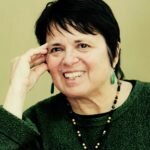
Cherrie Moraga
Cherrie Moraga is the co-editor of This Bridge Called My Back: Writings by Radical Women of Color. Current works include A Xicana Codex of Changing Consciousness: Writings 2000–2010, and most recently a memoir, The Native Country of a Heart. She is the recipient of the United States Artist Rockefeller Fellowship for Literature, and for the last 20 years, has served as an Artist in Residence in the Department of Theater and Performance Studies and Comparative Studies in Race & Ethnicity at Stanford University.
Read more about Cherrie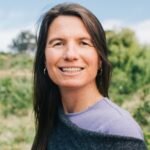
Melissa K. Nelson
Melissa Nelson (Anishinaabe/Métis/Norwegian) is an enrolled member of the Turtle Mountain Band of Chippewa Indians. A native ecologist, writer, media-maker, and indigenous scholar-activist, she is also an Associate Professor of American Indian Studies at San Francisco State University and president of The Cultural Conservancy, an indigenous rights organization. She edited Original Instructions: Indigenous Teachings for a Sustainable Future and is completing a co-edited anthology, Keepers of the Green World: Traditional Ecological Knowledge and Sustainability for Cambridge University Press.
Read more about Melissa K.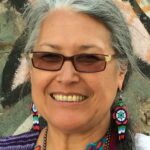
Celia Herrera Rodriguez
Celia Herrera Rodríguez (Xicana/O’dami) is a painter, performance, and installation artist whose work reflects a full generation of dialogue with Chicano, Native American, Pre-Columbian, and Mexican thought. A Senior Adjunct Professor in Diversity Studies at California College of the Arts, she also teaches MeXicana/o Art History and Practice in the Chicano Studies Program at UC-Berkeley, and held appointments at Stanford University, UC Santa Cruz, and the School of the Art Institute of Chicago.
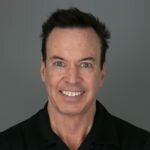
Greg Sarris
Greg Sarris received his Ph.D. in Modern Thought and Literature from Stanford University, where he was awarded the Walter Gore Award for excellence in teaching. He has published several books, including Grand Avenue (1994), an award-winning collection of short stories, which he adapted for an HBO miniseries and co-executive produced with Robert Redford. He is serving his 13th elected term as Chairman of the Federated Indians of Graton Rancheria. Formerly a full professor of English at UCLA, and then the Fletcher Jones Professor of Creative Writing and Literature at Loyola Marymount University, Greg now holds the position of Federated Indians of Graton Rancheria Endowed Chair of Sonoma State University, where he teaches a number of courses in Creative Writing, American Literature, and American Indian Literature.
Read more about Greg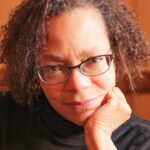
Lauret Savoy
Tracing memory threads Lauret Savoy’s life and work: unearthing what is buried, remembering what is fragmented, shattered, eroded. A woman of African American, Euro-American, and Native American heritage, she weaves together stories we tell of the American land’s origins and the stories we tell of ourselves in this land. Her latest book, Trace: Memory, History, Race, and the American Landscape, won the 2016 American Book Award. It was also a finalist for the PEN America Open Book Award among other honors. Lauret is a professor of environmental studies and geology at Mount Holyoke College, a photographer, and pilot.
Read more about Lauret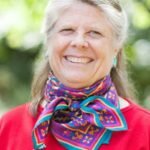
Constance Washburn
Constance Washburn M.A., activist, educator, facilitator, and director is a founding member of the Conscious Elders Network, a Buddhist practitioner since 1968, and a student of the Work That Reconnects since 1994. As Education Director at Marin Agricultural Land Trust and Marin Organic, she created programs for adults, teachers, and K-12 students reconnecting them to the land and their food system. She brings her nature connection, mindfulness training, theater and education backgrounds together to create opportunities for people to reawaken to their interconnectedness.
Read more about Constance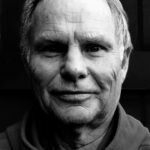
Brooke Williams
Brooke’s conservation career spans 30 years, most recently with the Southern Utah Wilderness Alliance. He has an MBA in Sustainable Business from the Bainbridge Graduate Institute. He’s a freelance journalist with four books including Halflives: Reconciling Work and Wildness, and dozens of articles. His most recent book, Open Midnight, documents his exploration of places where the outer and inner wilderness meet. He and his wife, the writer Terry Tempest Williams, and their dog Winslow split their time between Castle Valley, Utah and Jackson Hole, Wyoming.
1. LIMANTOUR BEACH: FIRST EUROPEAN CONTACT
With: Betty Goerke; Sky Road Webb
Meet at the Dance Palace. Carpool to two locations (Limantour Beach; Kule Luklo).
Join Betty Goerke, author of Discovering Native Peoples of Point Reyes, and Miwok Indian Sky Road Webb. At Limantour Beach, hear the fascinating story of the very different receptions the Indians gave to the first European sea captains: Francis Drake, who came in 1579, and Sebastian Cermeno, who sailed into the area in 1595. We will then follow Cermeno’s trail by car from the beach to Olema, stopping at Kule Loklo, a recreated Indian village, where Sky Road Webb will sing traditional Miwok songs.
Wheelchair accessible: NoRestroom: Yes
Difficulty: 2
Distance from the Dance Palace: 21 miles round trip. Short walks at Limantour Beach, Olema Marsh, and Kule Loklo.
2. LAIRDS LANDING: A LONG HISTORY OF NATIVE PEOPLE
With: Theresa Harlan; Paul Engel
Meet at the Dance Palace. Carpool to Lairds Landing in Inverness.
Lairds Landing on Tomales Bay reflects many aspects of the long and continuous history of Coast Miwok people within Marin County. From the late 19th to the mid-20th century, it was home to an extended family of Coast Miwok ancestry who built and occupied structures that still stand. Theresa Harlan, adopted daughter of Elizabeth Campigli Harlan who grew up at Lairds Landing, will speak of the family’s history. PRNS archaeologist Paul Engel will give the broader history of the area. There is a one-mile hike from the trailhead to Lairds Landing.
Wheelchair accessible: NoRestroom: No
Difficulty: 2
Distance from the Dance Palace: 22 miles round trip to Marshall Beach Trailhead
3. INVERNESS: SHAFTER FAMILY LEGACIES— DAIRIES & BEACHES
With: Carola DeRooy; Meg Linden; Elizabeth Whitney
Meet at the Dance Palace. Carpool to two locations (Jack Mason Museum & Chicken Ranch Beach).
Learn about the legacy of the Shafter family from the Jack Mason History Museum’s Meg Linden. In the mid-19th century, they created the A-Z dairy ranches which are now part of Point Reyes National Seashore. View a new exhibit “Hidden History: Diaries, Day Books & Letters of Old West Marin” primarily from the Shafter Collection curated by Point Reyes National Seashore Archivist, Carola DeRooy. Shafter descendant Elizabeth Whitney takes us to nearby Chicken Ranch Beach, a Miwok settlement site as well as the subject of the 1971 Marks v. Whitney lawsuit which set the precedent for the protection of public access to California beaches.
Wheelchair accessible: YesRestroom: Yes
Difficulty: 2
Distance from the Dance Palace: 10 miles round trip
4. POINT REYES PENINSULA: HISTORIC ALPHABET RANCHES & A HEARTY HIKE
With: Jolynn Mendoza McClelland; Bob McClure; Burr Heneman
Meet at the Dance Palace. Carpool to Chimney Rock Trailhead
California’s dairy industry began here in the 1850s at the 26 “alphabet” ranches. We will drive through many of the historic ranches on our way to a hike at Chimney Rock with guide Burr Heneman. Wildflowers will just be starting to bloom and elephant seals can be viewed on the beach below. We will meet ranchers Bob McClure and Jolynn Mendoza McClelland who will share their family stories. Jolynn’s great-grandfather J.V. Mendoza immigrated from the Azores and settled on the “A” Ranch in 1919. James McClure, a carpenter, came from Ireland in 1889 and established a dairy at the “I” Ranch on Pierce Point Road which his great-grandson Bob now operates as an organic operation.
Wheelchair accessible: NoRestroom: Yes
Difficulty: 2
Distance from the Dance Palace: 35 miles round trip.
5. BOLINAS: A FASCINATING FAMILY LEGACY
With: Gus Knowles; Elia Haworth
Meet at the Dance Palace. Carpool to two locations (Bolinas Museum & Gospel Flats Farm)
Since the 1880s, the Waterhouse and the Pepper families have been pivotal in the development of Bolinas. Descendent Gus Knowles and history curator Elia Haworth will share stories of town and family on this downtown walking tour, starting at Bolinas Museum’s Waterhouse-Pepper history exhibit. Then we’ll visit Gospel Flats Farm, the original Pepper homestead in a landscape saturated with history.
Wheelchair accessible: YESRestroom: Yes
Difficulty: 2
Distance from the Dance Palace: 25 miles round trip
6. MARSHALL: OYSTERING & FISHING & A BEAUTIFUL HIKE
With: Terry Sawyer; Zane Finger; Merrel Rocca; and other community members living on Tomales Bay
Meet at the Dance Palace. Carpool to Marshall.
Over the years, Tomales Bay has provided food and livelihoods for many—from the Coast Miwok to European Settlers from Switzerland, Yugoslavia, Germany, Ireland, Mexico, and more. Taste oysters at Hog Island Oyster Company. Learn the history of oystering and fishing on Tomales Bay from Hog Island founder Terry Sawyer with Zane Finger. Meet Coast Miwok Merrel Rocca, and other community members living off the Bay’s bounty. Then access the shore on an easy hike at Millerton Point with historian Dewey Livingston following the loop trail to Alan Sieroty Beach which is named for the former state legislator and conservationist. Dewey’s excited to share the history of this beautiful spot of land with you.
Wheelchair accessible: NoRestroom: Yes
Difficulty: 2
Distance from the Dance Palace: 18 miles round trip
7. NICASIO: CHEESE & HISTORY
With: Elaine Doss; Rick Lafranchi, and other members of the community
Meet at the Dance Palace. Carpool to two locations (Nicasio Square; Lafranchi Ranch).
Learn about Nicasio’s history from the days of its original Miwok inhabitants through the waves of European settlers who created family farms and dairy ranches in the beautiful valley. This walking tour of Nicasio Square’s historic buildings starts with a visit to the Nicasio Historical Society and includes a short horse-and-buggy ride around the square. We will then walk to the Nicasio Valley Cheese Company for a tasting of traditional Swiss-Italian-style cheeses. Rick Lafranchi and family continue a family tradition of dairying begun here in 1919 by Swiss immigrant Fredolino Lafranchi. We will end with a visit to the hilltop home of Mary Lafranchi, matriarch of the family, for an overview of Lafranchi Ranch operations.
Wheelchair accessible: NoRestroom: Yes
Difficulty: 2
Distance from the Dance Palace: 18 miles round trip.
8. POINT REYES STATION: FINDING A HOME ON THE RANGE
Meet at the Dance Palace. Walk from there with the group.
With: Dewey Livingston; Cowgirl Creamery Cheesemakers; Michael and Vivien Straus; Socorro Romo; Ramon Ramirez, Dolores Gonzalez; and others
Historian Dewey Livingston leads a walking tour of Point Reyes Station’s historic buildings. Learn about Jewish dairy ranchers Bill and Ellen Straus, who immigrated to escape the Nazis. (Ellen co-founded Marin Agricultural Land Trust.) Taste cheese at Cowgirl Creamery. Hear stories from the newest wave of immigrants from Mexico, and learn how they, too, have become essential community members and future ancestors of this land.
Wheelchair accessible: YesRestroom: Yes
Difficulty: 2
Distance from the Dance Palace: Two-mile roundtrip walk, mostly on sidewalks
9. OLEMA, SAN ANDREAS FAULT: GEOLOGIC & CULTURAL UPHEAVAL
With: Peter Nelson; Fred and Laura Imhoff; Anne Marie Wilson; Johnny Villagomes
Meet at the Dance Palace. Carpool to PRNS Visitor Center
The 1906 Earthquake was felt strongly in Olema making it an apt setting for exploring cultural upheaval—Spanish, Mexican, American, Coast Miwok—from Spanish arrival in 1769 to the 1848 cession to the United States. At the Visitor Center, Peter Nelson of the Federated Indians of Graton Rancheria describes Miwok history, followed by a short hike to Kule Loklo, a recreated village. Then visit the Red Barn, former site of the Garcia adobe, for an exhibit on Californios and a talk by Garcia descendants Fred and Laura Imhoff, Anne Marie Wilson, and Yokayo Pomo Johnny Villagomes one of whose ancestors was adopted by the Garcia family during the Californio period.
Wheelchair accessible: YesRestroom: Yes
Difficulty: 2
Distance from the Dance Palace: 4 miles round trip.
10. BOLINAS: BACK-TO-THE-LAND
With: Avis Licht; Penny Livingston; Bill Niman
Meet at the Dance Palace. Carpool to Bolinas.
The 1970s back-to-the-land movement drew another wave of immigrants to West Marin. Many “hippie” farmers of that era have become national leaders of the local and organic food efforts. Walk the pastures with cattleman Bill Niman who started the movement for humanely raised livestock. Learn his story and that of organic farmer Dennis Dierks. At Commonweal Garden, hear from Avis Licht, its founding biodynamic gardener, and learn about permaculture from current steward Penny Livingston.
Wheelchair accessible: NoRestroom: Yes
Difficulty: 2
Distance from the Dance Palace: 26 miles round trip.
11. LAND & WATER & ART: RUSSELL CHATHAM & THOMAS WOOD
With: Russell Chatham & Thomas Wood
Meet at the Dance Palace. Carpool to two locations (Inverness Park and Nicasio).
Meet renowned painter and avid fly fisherman Russell Chatham. He and cousin Thomas Wood, also a well-known landscape painter, are grandsons of the Italian-American artist Gottardo Piazzoni whose California landscape murals have pride of place at the DeYoung Art Museum. Visit their studios, and hear their stories about growing up in a family of artists inspired by nature here in West Marin and in the Carmel Valley.
Wheelchair accessible: NoRestroom: Yes
Difficulty: 1
Distance from the Dance Palace: 22 miles round trip.
12. LAND & PEOPLE & ART: SUSAN HALL & ART ROGERS
With: Susan Hall; Art Rogers
Meet at the Dance Palace. Carpool to two locations in Point Reyes Station.
Though he hails from North Carolina, Art Rogers has documented West Marin people for more than 40 years. His family photos taken over time honor the past and suggest the future. He is a Guggenheim Fellow and a National Endowment for the Arts recipient. Artist Susan Hall, a Point Reyes native, left to spend 20 years in New York City, gaining great success as an artist. She returned to create ceramics and paintings inspired by the beauty of West Marin. Visit their studios, and hear their stories.
Wheelchair accessible: NoRestroom: Yes
Difficulty: 1
Distance from the Dance Palace: 2 miles round trip.
Listen to panels from the 2015 GOH Conference: Women & the Land
Mapping a New Geography of Hope – Opening Keynote
Listen to audio recording:
Panel 1 – What is the work of a writer in a wounded world?
Listen to audio recording:
Panel 2 – What are women’s gifts and responsibilities in the work against carbon catastrophe?
Listen to audio recording:
Panel 4 – What are the metaphors we need for a new world?
Listen to audio recording:
